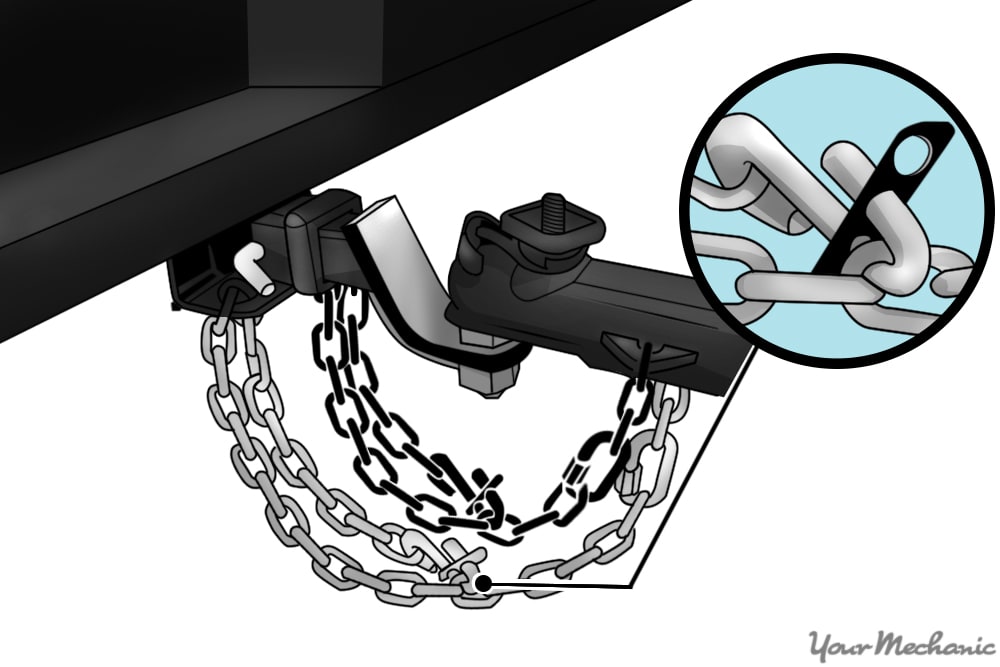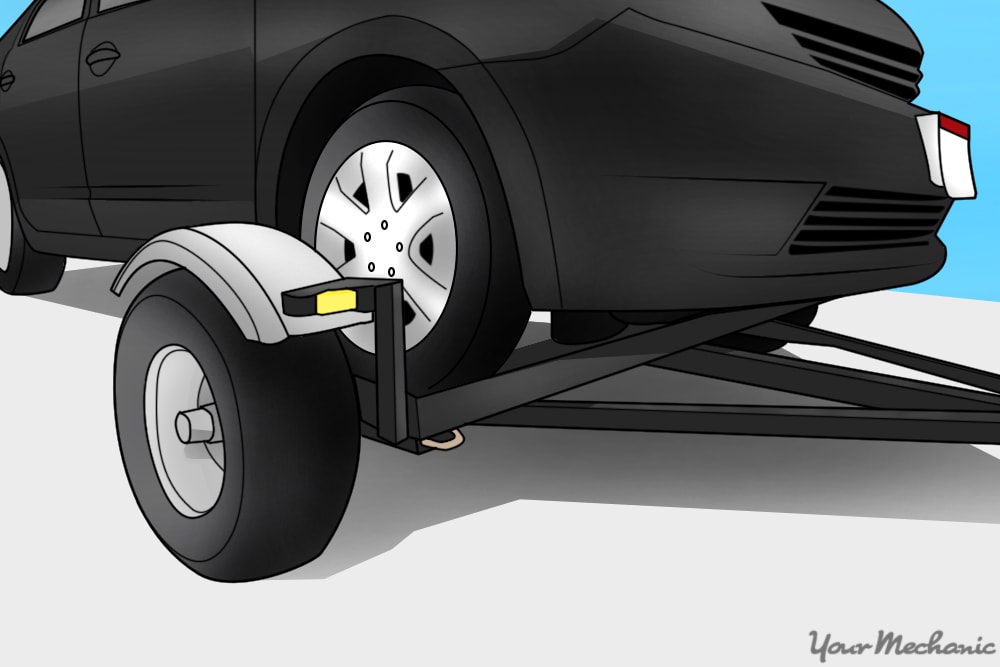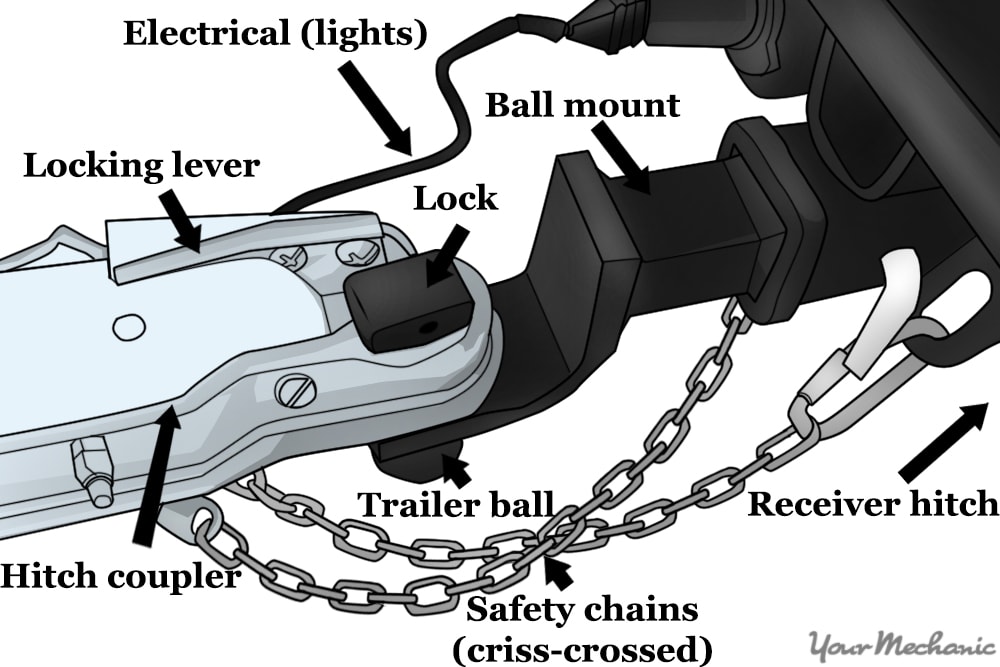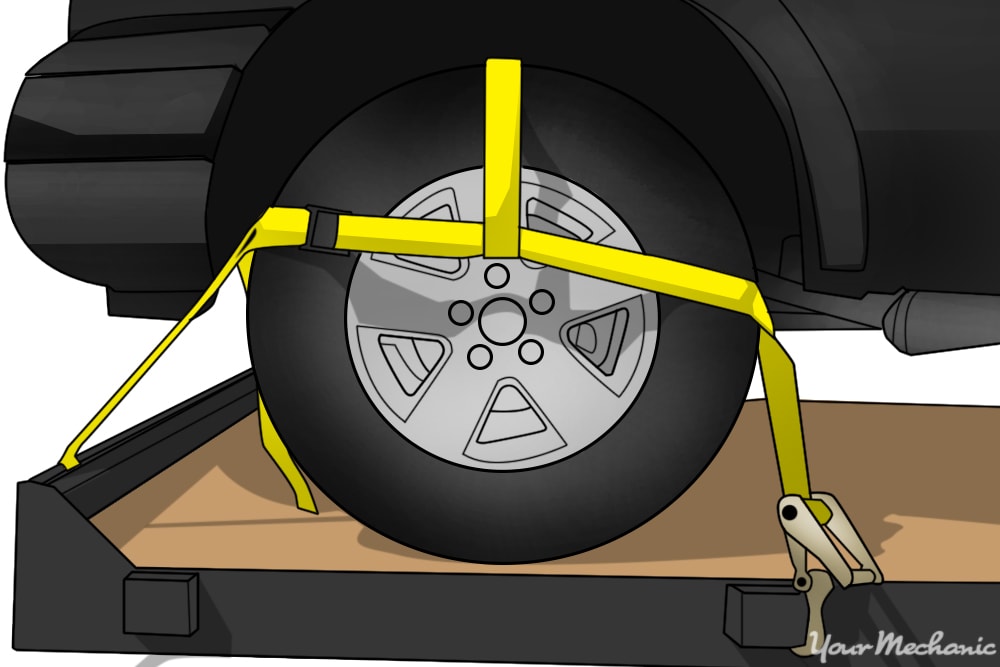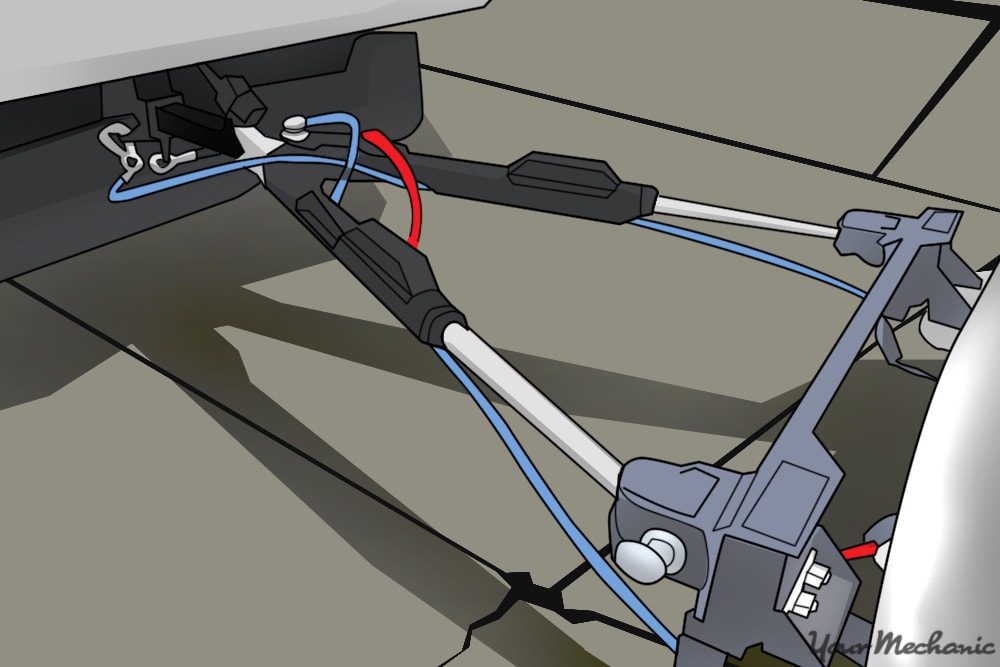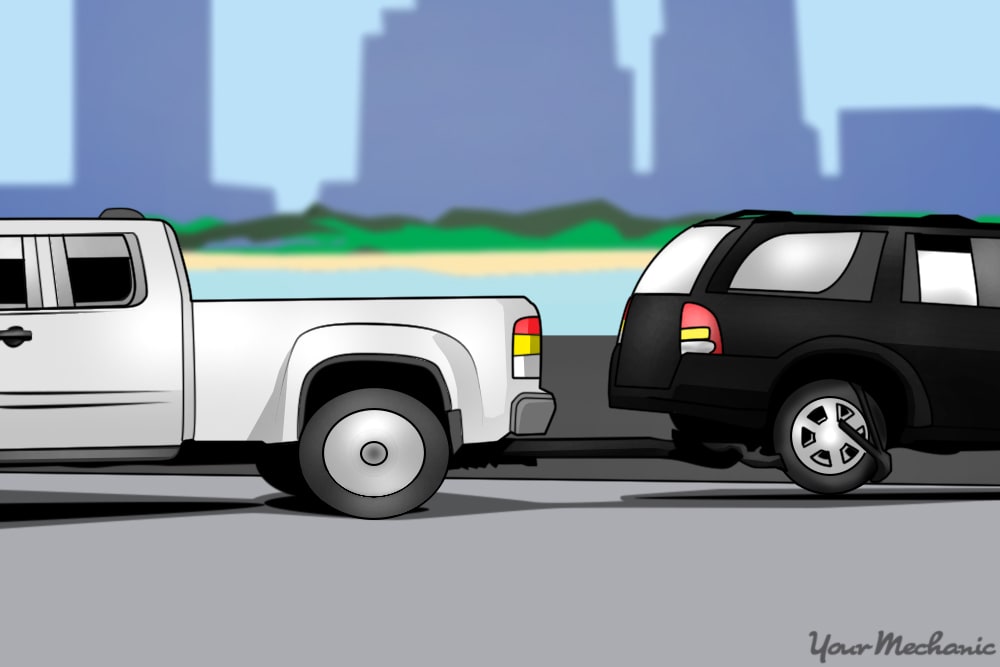

You may need to tow a vehicle for a number of reasons, including moving, taking your vehicle along on a trip, or transporting it to another location. Whatever your reason for towing a vehicle, you need to know how to properly tow it. You can use some easy-to-follow guidelines to make the whole towing process easier.
- Warning: Make sure to follow all local laws, as well as the laws of any other states you plan on traveling through when towing a vehicle. This includes using the appropriate towing lights and mirrors.
Method 1 of 3: Using a tow dolly
A tow dolly lets you to tow a vehicle while allowing the towed vehicle to take some of the load off the towing vehicle. This is accomplished by letting the rear wheels rest on the ground while you tow the vehicle. This works better when towing is front wheel drive vehicle, since a rear wheel drive, or four wheel drive, requires you to disconnect the drive shaft while traveling long distances.
- Tip: The vehicle you are towing with must weigh, at a minimum, 750 pounds more than the vehicle it is towing, plus the towing device. Ensure that you do not exceed the tow capacity of the device.
Step 1: Connect the tow dolly. Attach the tow dolly coupler to the hitch ball on the towing vehicle.
This requires you to properly seat the coupler on the hitch ball and hand tighten the coupler until you have a tight and secure connection.
Check that the coupler is securely fastened by moving the tow vehicle forward slightly or pushing the dolly to the rear.
Attach the safety chains from the dolly to the tow vehicle. This keeps the dolly connected to the tow vehicle even if the coupler comes off the hitch ball.
- Tip: When towing a vehicle long distances, check the hitch connection regularly to make sure it is still properly connected.
Step 2: Load the towed vehicle. Drive the towed vehicle onto the dolly ramp facing forward.
- Warning: Facing the vehicle to the rear can cause the towed vehicle to whip and sway.
Ensure that the entire width of the towed vehicle fit on the ramps. Also, check all clearances, such as for spoilers, air dams, and other vehicle parts while loading.
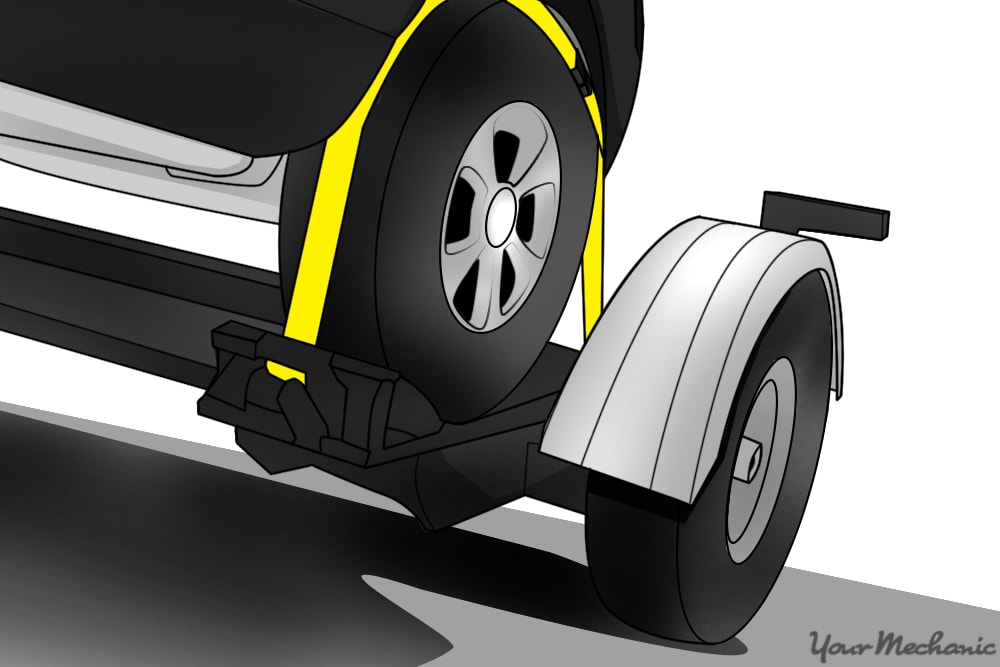
Step 3: Secure the towed vehicle. Continue driving onto the dolly until both the front tires are firmly against the wheel stops.
Using the tire straps on the tow dolly, secure both front tires.
Loop the towed vehicle security chains around a frame member on the towed vehicle. Keep the chains away from fuel and brake lines to prevent damage to these components.
Step 4: Disconnect the driveshaft. On rear-wheel-drive and four-wheel-drive vehicles, you need to disconnect the driveshaft to keep from damaging the transmission of the towed vehicle.
You need to crawl underneath the vehicle and locate where the driveshaft connects to the differential.
Once you have found the connection point of the driveshaft and differential, look for the u-joint that holds the driveshaft to the differential housing.
Secure the driveshaft to the undercarriage of the towed vehicle using a strap or bungee cord. Make sure it is secured to a firm part of the frame, but not the exhaust pipes.
Remove the four bolts at the u-joint. Next, push the drive shaft up as far as possible, adjusting the strap or bungee cord as needed.
Screw the bolts back into the yoke on the differential housing. Alternatively, you can place them in a baggie in the glove box until needed again.
Repeat the above steps for the other axle , such as on a four wheel drive, if needed..
Call an expert mechanic to disconnect the driveshaft if you do not feel confident in doing the task yourself.
Method 2 of 3: Using a trailer
Material Needed
- Nylon straps or wheel nets
Another method of towing a vehicle is to use a trailer. While safer than other methods, a trailer has its own drawbacks, the main one that the combination of the towed vehicle and trailer might be too heavy for the towing vehicle to handle.
- Warning: It is important that you know the tow rating of the tow vehicle. Make sure it is rated to haul the weight of the vehicle and the trailer used to haul it.
Step 1: Attach the trailer: First, you must securely attach the trailer to the hitch ball of the tow vehicle.
Make sure the trailer coupler is securely attached to the hitch by driving the tow vehicle forward slightly.
Attach the safety chains from the trailer to the tow vehicle.
Connect the trailer wiring harness to the tow vehicle sockets.
If the trailer comes with a brake battery, check its charge before setting out on a trip.
Step 2: Load the vehicle. Next, extend the trailer ramps and drive the towed vehicle onto the trailer.
Center the towed vehicle and drive it slowly up the ramps.
Continue driving until the front tires are resting against the tire stops at the front of the trailer.
Place the vehicle in park and set the parking brake.
Step 3: Secure the vehicle. The last step involves securing the towed vehicle to the trailer.
Using nylon straps or wheel nets, position the straps over the center of the front tires. Ratchet the strap down until tight.
Fasten the security chains to the front and back of the vehicle frame, making sure to avoid brake and fuel lines.
Method 3 of 3: Using a tow bar
Another method for towing a vehicle is to use a tow bar. Tow bars allow all four wheels of the towed vehicle to rest on the ground while moving. When using a tow bar, you need to disconnect the driveshaft to keep from damaging the transmission. Most often, tow bars are used in tandem with an RV to tow a vehicle for use while traveling cross country.
- Warning: Using a tow bar requires that you attach brackets to the front frame of the towed vehicle. If you do not feel comfortable doing this yourself, have an expert mechanic or auto body technician attach the brackets for you.
Step 1: Secure the brackets. Using the tow bar as a guide, find a strong part of the vehicle frame to attach a bracket on each side of the front of the towed vehicle.
This requires you to drill into the frame of your vehicle.
The end result is two brackets to which you can attach and detach the tow bar quickly.
Step 2: Check the brake lights. Before hooking up the tow bar, make sure that the brake lights and turn signals of both vehicle work in tandem, or use removable tail lights.
Purchase a wiring system that connects and coordinates the brake lights and turn signals of both vehicles. Standard vehicles us a 12N electrical system for this purpose, while RVs use a 12S electrical system.
If you do not plan on towing the vehicle that often, then you can opt to use removable tail lights. Removable tail lights attach to the rear of the towed vehicle and use the electrical system of the tow vehicle for braking and signaling turns.
Step 3: Attach the tow bar. Next, attach the tow bar to the towing vehicle.
Start by attaching the tow bar brackets on the towed vehicle. You can do this by sliding the bolts through the ends of the tow bar that attach to the brackets attached to the car. Further secure the bolts using washers and nuts that correspond to the bolts size. Use a socket wrench to tighten.
Next, attach the two tow bars coming from the brackets on the towed vehicle to the pivot bracket using the bolt, nuts, and washers that come with the tow bar. The pivot bracket connects to the part of the tow bar that either inserts directly into the hitch receiver or has a coupler that attaches to the hitch ball.
Further secure the tow bar by attaching safety chains from the tow vehicle to the pivot bracket and from the base plate of the pivot bracket to the towed vehicle.
You can tow a vehicle safely and easily by keeping certain precautions in mind. This includes properly attaching towing equipment, such as tow dollies, trailers, and tow bars, and making sure that you properly secure vehicles before towing.


